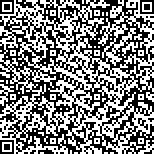| 摘要: |
| 通过对重庆地区农村住宅冬季室
内热环境的实测分析,表明农村住宅室内平
均温度仅比室外温度高1~2℃,室内温度低
于9℃的频率约占8 0%,农宅的总体热环境
还比较差;农户的生活习惯也会影响到室内
热环境的变化,特别是堂屋温度受到户门开
关使用的影响比较突出明显,白天出现较大
的波动和下降。为了研究这种影响的程度,
采用Desig nbu i lder软件建模;根据堂屋温
度的实测数据确定户门的日常使用方式,模
拟住宅室内温度。结果显示,农宅在室外
低温条件下,室内温度都没有达到《农村居
住建筑节能设计标准》所要求的低限取值
8℃,所以围护结构需要加强保温;其次户门
的日常使用方式导致堂屋温度白天出现较大
的下降,最大降幅达到3.2℃,累积降温达到
15℃,并对相邻房间温度产生不利影响。 |
| 关键词: 农村住宅 热环境测量 模拟 |
| DOI:10.13791/j.cnki.hsfwest.20150211 |
| 分类号: |
| 基金项目:国家自然科学基金资助项目(51478059) |
|
| Rural Residential Thermal Environment in Winter with the Effect of Door Using Mode inChongqing Municipality |
|
SONG Ping,TANG Mingfang
|
| Abstract: |
| Through thermal environment measurement and the analysis of rural residence in
winter in Chongqing, it is showed that the average temperature of rural indoor residence is
higher than the outdoor temperature by only 1~2℃, and the frequency of indoor temperature
lower than 9℃ accounts for about 80 percent. The overall thermal environment of
rural residences is relatively poor, and farmers’ living habits also inf luence the indoor
thermal environment, especially the door using mode. It is observed that the living room
temperature experiences larger fluctuation and declines in the daytime when the door use
is more often. In order to study this effect, we adopt Designbuilder to build the model, and
determine the daily door use by the measured room temperature to simulate the indoor
temperature. The results show that the indoor temperature fails to reach 8℃, which is the
low limit required by the Rural Residential Building Energy Efficiency Design Standard in
low outdoor temperature conditions. Therefore, firstly, the rural residences need strengthen
their function of thermal insulation; secondly, the living room temperature declines sharply
due to the usage of the door in the daytime with a maximum temperature decline of 3.2℃
and a cumulative decline of 15℃, which generates an adverse effect on the adjacent room
temperature. |
| Key words: Rural Residential Thermal Environment Measurement Simulation |


